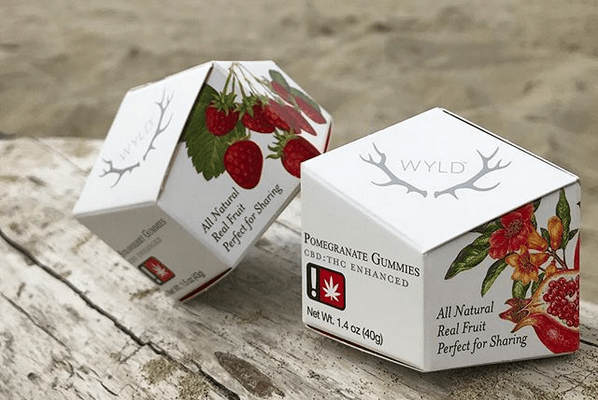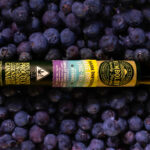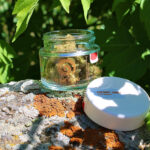Two thousand eighteen was the Year of the Package for the cannabis industry, for several reasons: Packaging compliance in many states changed radically, product competition in dispensaries escalated, and the brand wars heated up. Seizing upon all the activity, many well-established and start-up packaging companies took their wares to myriad expos, showcasing what they could do to improve industry standards.
Perhaps the biggest packaging trend was sustainable materials. Companies like Sana Packaging, which uses 100-percent plant-based hemp plastic made in the USA, and STO Responsible, which uses oxygen-driven degradable plastic, claim their products can restore the natural order of nature. STO co-founder and Chief Creative Officer Sandra Elkind, a longtime medical marijuana patient, noticed many of the products she used not only were unattractive, but most also were not functional. Almost all of them were made of unsustainable materials. Elkind embarked on a mission to create a company that met the needs of brands and environmentalists while complying with strict child-proofing regulations enacted by state agencies. She went even farther, creating pet-resistant packaging.
“We had a clear focus: to create packaging that was sustainable while also eye-catching, unique, and fashionable for brands,” Elkind said. “I always thought it was silly that retailers and manufacturers had to choose between what’s good for Mother Nature and what is good for their bottom line.”
For their part, retailers have been very pleased with the improvements in packaging they’ve seen. Aaron Heisler, head of marketing for Oregon dispensary Jayne, pointed out new regulations provided an excellent opportunity for brands to step up their packaging game. “I’ve been impressed with the ever-increasing quality of Oregon’s cannabis packaging,” he said. He finds new options for sustainable packaging particularly intriguing. “As the industry develops further, increasing the overall sustainability of our packaging is something that should be on peoples’ radar,” he said.
Heisler opined Wyld gummies provide a good example of how packaging can help a product stand out on crowded shelves. While the imagery is simple and clean, the unique shape of the boxes—they look like fruit-splashed diamonds—catches consumers’ attention. Heisler, who spends a lot of time behind the counter, said many customers comment, “We love those gummies…and that box.”
Like many other upscale shops and boutiques, Jayne strives to create an atmosphere with a unique personality that is at once professional and comfortable. The staff looks for products that reflect this ethos. Case in point: The newly relaunched packaging for Hamilton Cannagars made the products an instant favorite with budtenders. Heisler said consumers have taken note of the vintage glass tube topped with a blue, wax-like cap. “They already had a good product,” he said, “and now their packaging matches the experience.”
Failing to ensure packaging speaks the brand’s intended message is a mistake, Heisler cautioned. A quality product meant to attract consumers seeking quality products should be dressed up for the occasion. “Brands that have done the best job create packaging that fits their brand story and stands out to buyers and customers alike,” he said.
That sentiment is music to the ears of Sana Packaging co-founder Ron Basak-Smith. Smith knew hemp plastic would make environmentally responsible packaging, but he was adamant the sizes and shapes available in the unconventional material be just as exciting as traditional paper and plastic so brands could communicate their stories and stand out. Sana offers tubes, small boxes, 3.5-gram flower containers, and hemp paperboard boxes for vape pens, concentrates, and edibles. “We’re excited to provide the cannabis industry with some much-needed differentiated, sustainable, and compliant packaging solutions,” he said.
Smith believes the current “take-make-dispose” economic model is not only unsustainable but also bad for business. Sana Packaging was launched to help change the narrative to a more “circular” economy that rests on the pillars of restoration and regeneration. “As a rapidly growing and emerging industry, I believe cannabis and industrial hemp have a responsibility to be platforms for positive social, economic, and environmental change,” he said.
STO’s Elkind couldn’t agree more. Like Sana, STO offers a range of packaging options for pre-rolls, flower, topicals, and more. The company developed an innovative box style featuring a wide mouth and deep interior that make it easier for customers to reach in and remove products. “We also wanted to create packaging that could be stacked and packed easily,” she said.
B-Rad Miller, director of purchasing for Have a Heart dispensary in Washington state, said he has been pleasantly surprised by how innovative, creative, and smart packaging has become. Like many other retailers, he worried the state’s new laws might make packaging more mundane. Instead, he said, companies rose to the challenge, designing dynamic product containers. Miller’s criteria for packaging are simple: Everything must be 100-percent compliant, containers should match the brand message, and designs should “pop” on the shelves.
“In some states vendors have become aggressive toward rules set regarding packaging, which, in the end, have been created not only for safety but to reduce waste,” he said. “The amount of waste in the cannabis industry as a whole is a big problem that we need to work together to fix.”
Miller also has a piece of advice for those who simply think great packaging of a bad product will win the day. “Great packaging will get people to try [a product],” he said, “but to retain the consumer, it is the product inside that counts. As I have always said ‘You don’t smoke the packaging.’”













